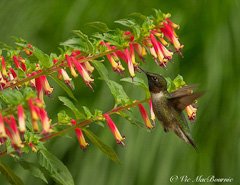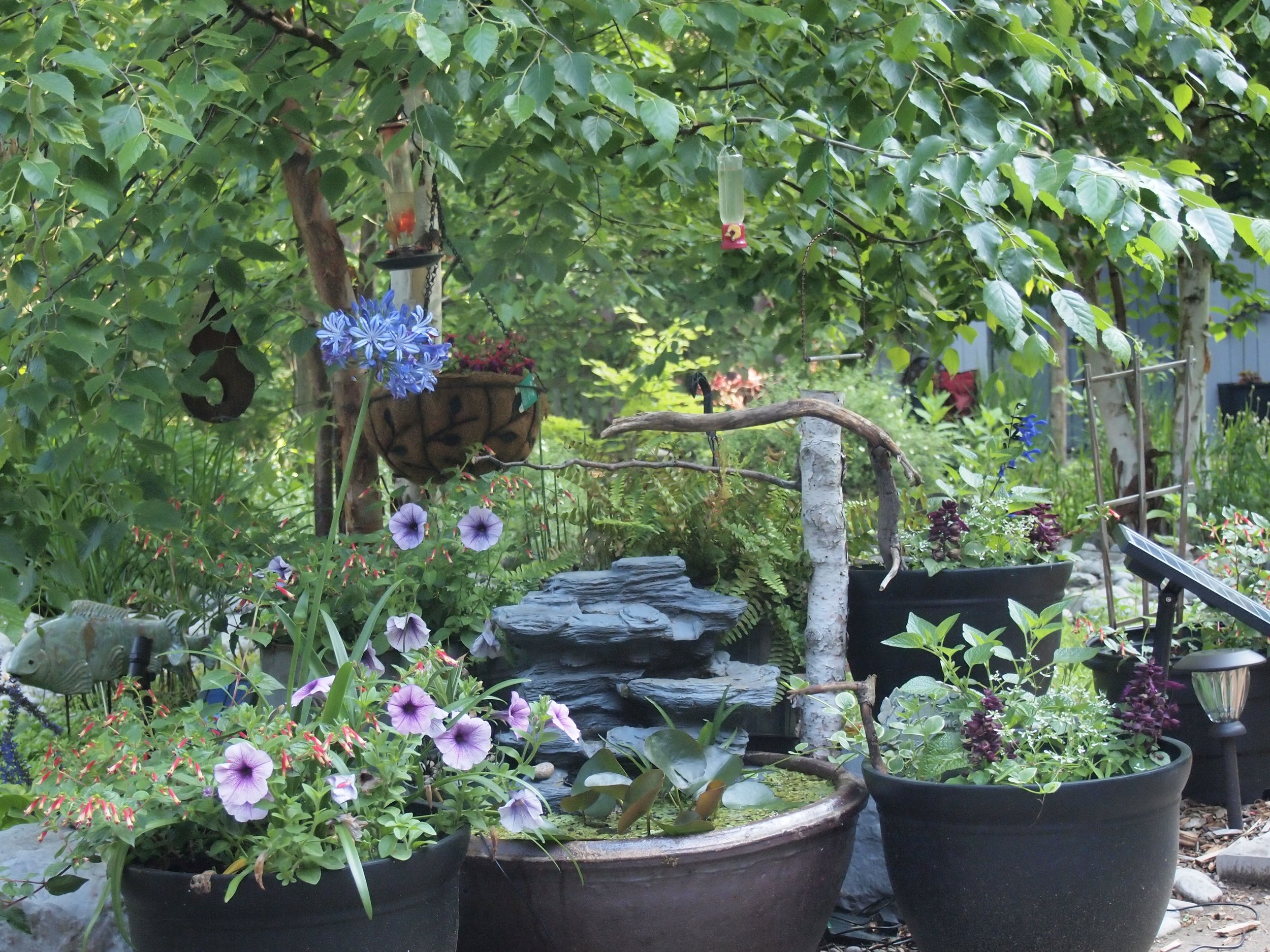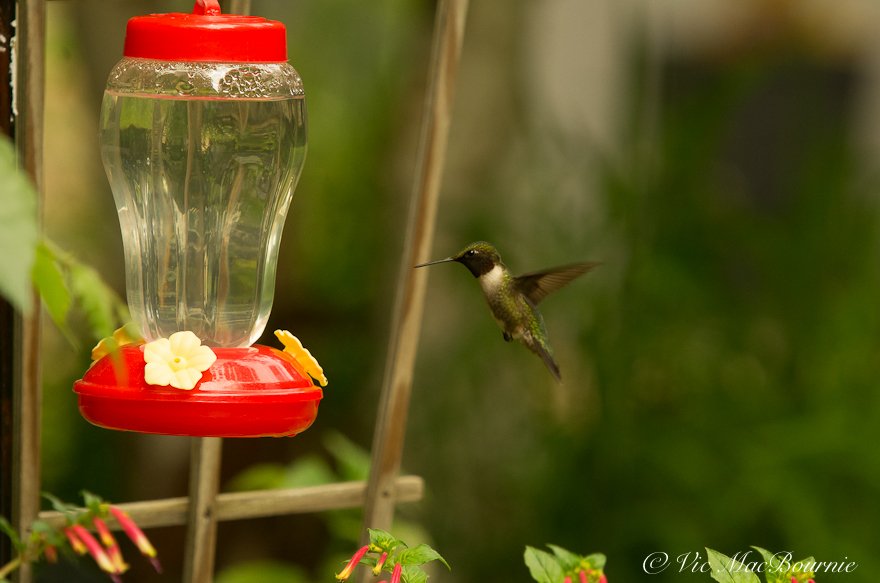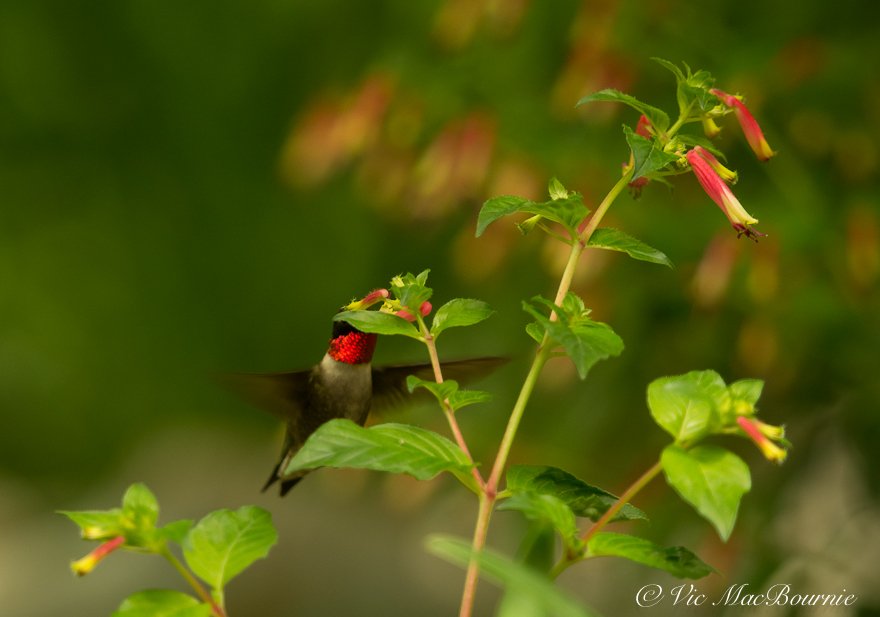Cuphea Vermillionaire takes centre stage in hummingbird corner
If you are looking to attract hummingbirds, you need to include Cuphea Vermillionaire on your list of plants. Grow it in the landscape or in containers and planters.
Firecracker plant adds explosion of colour and hummingbirds love it
Cuphea may be best known for attracting hummingbirds to your garden, but it doesn’t stop there.
Also known as the firecracker plant or cigar plant, Cuphea Vermillionaire is a great plant to add a non-stop riot of explosive colour to your garden, whether it’s grown as a perennial in warmer climates in zones 8 and higher, or an annual in colder zones.
The cigar-shaped red/orange and yellow flowers may not look impressive on their own, but when the plant is covered with hundreds and hundreds of flowers continuously blooming on a single plant, it’s more than impressive.
Different hybrids are available, including one where the flowers are more pink, but if it’s hummingbirds you are after, the regular red and yellow variety is probably the best.
An up-close image of Cuphea showing its dramatic colour and fringed opening.
Cuphea is primary plant in our hummingbird corner
Cuphea is the primary plant making up our hummingbird corner. Three plants in pots surround our patio container pond/waterfalls and form a light airy feel combined with Salvia Black and Blue, petunias and ferns just to name a few.
Three or four commercial feeders are also part of the hummingbird haven that is situated in a corner of our patio where the little birds can be enjoyed to the fullest.
It’s also set up as an outdoor photo studio to make photographing our visitors as easy as possible. Of course, hummingbirds are not the only ones attracted to the area. Butterflies, small birds, dragonflies and our friendly chipmunks are all at home among the almost tropical feel of the corner with the waterfalls, ferns and colourful flowers.
Cuphea might be tricky to find at your nursery
Depending on where you are located, finding the underused annual might be a little tricky.
I went to three of the largest nurseries in our area early this spring asking for the plant and all three not only did not have any, most had no idea what I was talking about.
Funny enough, I stumbled upon the plants at Home Depot where they were selling the plants. I was looking for the Proven Winners variety, because their plants always perform well, but the Home Depot plants are performing admirably in just their first month.
How to grow Cuphea
Cuphea is a real heat loving plant, so be sure to plant it in a sunny area for best flowering and to avoid the plants from getting leggy.
Cuphea Vermillionaire is one flexible, low maintanance flowering plant that does not need deadheading and can handle almost anything you throw at it.
The deep orange tubular flowers dangle on 18-24 inch stems from spring right through to fall and create a mounding form in the garden.
Cuphea growing in container with petunias and other flowers attractive to hummingbirds.
Although Vermillionaire can withstand dry periods better than most plants, it’s a good idea to keep the plant moist throughout the growing season. Once the plant is established, it does not require a lot of water.
If you are growing it as a perennial, it can take up to a year for it to get settled, so be sure to regularly water it in the first year. Also wait until spring growth begins, if you want to do some pruning on it.
Providing regular fertilizer will help keep the plants healthy and constantly flowering.
If you are located in a marginally hardy area, mulch the plant heavily during winter and then remove it in spring.
These plants are certainly worth overwintering if you can.
Unfortunately, Cuphea is susceptible to some garden pests including aphids, whiteflies and Japanese beetles. The hummingbirds will likely feast on the smaller insects, but keep your eye out for any infestations.
Picking off Japanese beetles is probably a good idea and spraying aphids with the hose should keep them under control.
Why do hummingbirds love Cuphea?
The long trumpet shaped tubular plants are particularly attractive to hummingbirds primarily because they are one of the only ones who can feed on these long tubular flowers.
Most bees and butterflies do not have the ability to reach the nectar in the flowers leaving an abundance for hummingbirds.
A male Ruby Throated Hummingbird feeds at Cuphea.
The combination of their long, slender beaks and their even longer tongues make this a plant designed almost exclusively for the hummingbird. That means there is always plenty of nectar available in the plants for the little birds.
The plant’s mounding habit, also makes the flowers very accessible to the birds and their flight pattern enables them to check out several flowers quickly and efficiently.
If you are in a small garden, consider using the plants in containers as a filler plant and pair it with other sun-loving performers. Consider growing them all by themselves in a large hanging basket or paired up with other plants to create a hummingbird hanging basket.
So, be sure to add a few Cuphea plants to your garden this year, whether it’s to attract and feed hummingbirds, or just to add a splash of hot colour to a sunny area of your garden.









